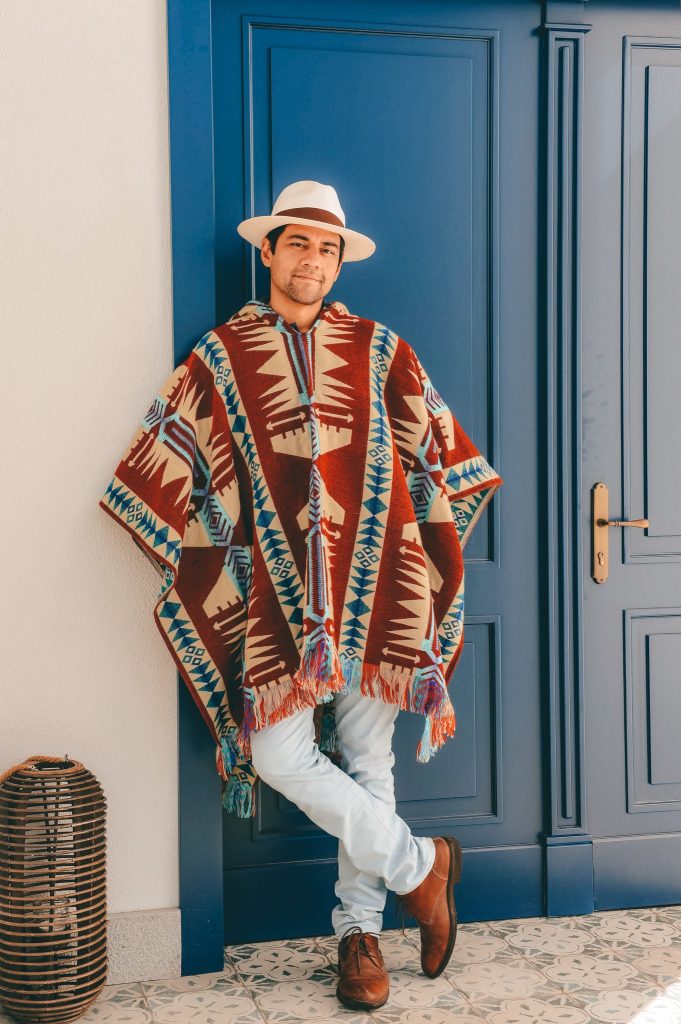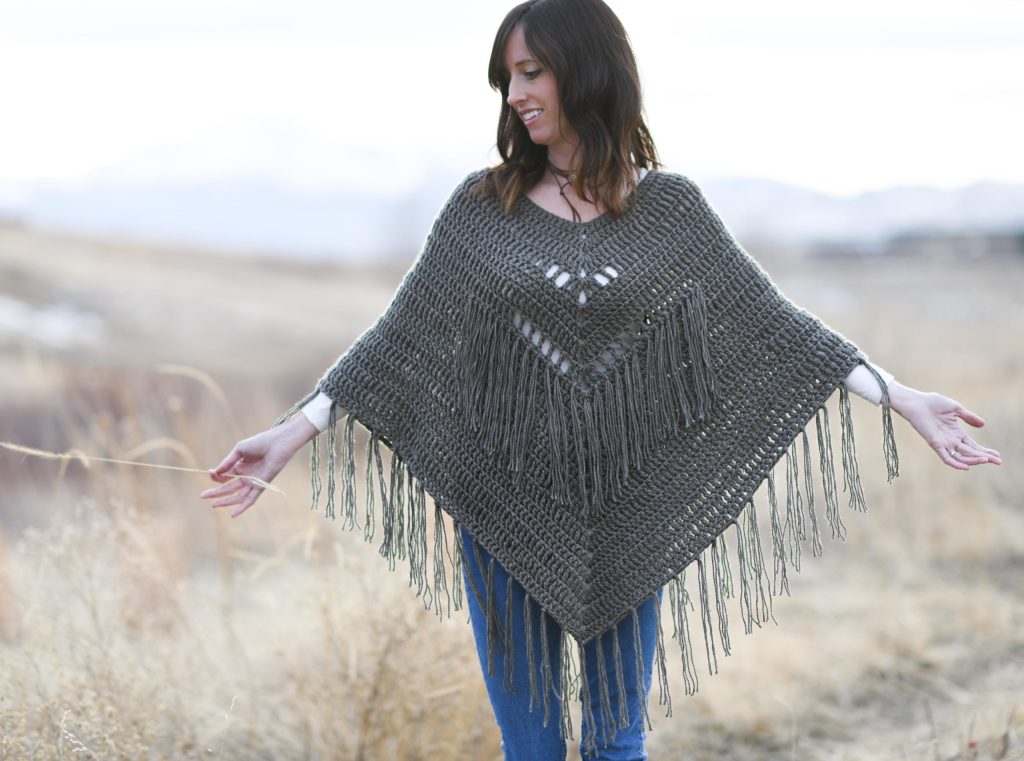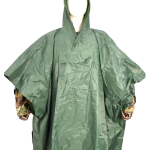Introduction
A poncho is a versatile and timeless garment that has been a part of various cultures around the world for centuries. Originating from the indigenous peoples of the Americas, the poncho has evolved from a simple, functional piece of clothing to a fashionable and adaptable accessory suitable for numerous occasions and environments. This unisex outerwear is known for its unique design, which typically consists of a single piece of fabric with an opening in the center for the head, draping down over the body to provide coverage for the shoulders, upper body, and sometimes extending to the mid-thigh or knee level.

Historical Background
The earliest ponchos were made from materials available locally, such as wool from llama or alpaca for the Andean regions, or cotton in warmer climates. These garments served as a practical solution for protection against the elements, especially rain and cold, while also reflecting the wearer’s cultural identity through patterns, colors, and weaving techniques. Ponchos were not only worn by common folk but also held symbolic significance in rituals and ceremonies.
Design and Materials
Modern ponchos are crafted from a wide range of materials, each suited to different needs and styles. Traditional materials like wool and cotton are still prevalent, providing warmth and breathability. However, synthetic fabrics like nylon and polyester have gained popularity due to their lightweight, waterproof, and quick-drying properties, making them ideal for outdoor activities and rain gear. High-tech materials like Gore-Tex are used in premium ponchos for enhanced waterproofing and breathability, catering to serious adventurers and athletes.
The design of a poncho can vary significantly. While the classic rectangular shape with a hole for the head is still common, contemporary designs incorporate hoods, sleeves, zippers, buttons, or toggles for added functionality and style. Some ponchos are reversible, offering two looks in one, while others feature intricate embroidery, prints, or woven patterns for a touch of elegance or personal expression.
Versatility and Functionality
One of the key appeals of a poncho lies in its versatility. It can be worn as a fashion statement over casual outfits, layered for warmth during colder months, or used as practical rainwear. Its loose-fitting design allows for easy wear over thick sweaters or jackets, making it a popular choice for transitional weather.
For outdoor enthusiasts, ponchos serve as a lightweight, packable shelter that can double as a ground sheet, emergency blanket, or even a makeshift tent. Hikers and campers appreciate the quick coverage and ventilation that ponchos provide without the bulk of traditional coats.
Fashion and Cultural Significance
In fashion, the poncho has experienced cyclical revivals, often reinterpreted by designers to reflect current trends. It has graced runways and streetwear scenes alike, with iterations ranging from luxurious cashmere blends adorned with fur trims to bohemian-inspired crochet pieces embodying a free-spirited aesthetic. Celebrities and influencers have embraced the poncho, further propelling its status as a fashionable accessory.
Moreover, the poncho continues to hold cultural significance in many communities. Indigenous artisans preserve traditional weaving techniques, passing down knowledge and skills through generations. These handcrafted ponchos are not just garments but also works of art, preserving cultural heritage and storytelling.

Environmental and Sustainable Aspects
In recent years, the poncho has also become a canvas for exploring sustainability in fashion. With growing concerns about the environmental impact of the textile industry, many designers and manufacturers are turning to eco-friendly materials and production methods for creating ponchos.
Recycled materials, such as plastic bottles transformed into polyester, are increasingly used to make ponchos without depleting new resources. Organic cotton, hemp, and linen are other popular choices for environmentally conscious consumers, as they are grown without harmful pesticides and have lower water requirements compared to conventional cotton.
Furthermore, fair trade practices are being implemented to ensure that artisans and workers involved in the production of ponchos, especially those from indigenous communities, are paid fairly and work under ethical conditions. This not only supports traditional craftsmanship but also promotes social and economic sustainability.
Integration in Uniforms and Workwear
The practicality and protective qualities of ponchos have led to their integration into various professional uniforms and workwear. Emergency services, such as search and rescue teams and medical responders, often include waterproof ponchos in their kits for quick deployment during adverse weather conditions. These specialized ponchos may feature high-visibility colors and reflective strips for safety in low-light scenarios.
Similarly, construction workers, landscape gardeners, and other outdoor professionals find ponchos a convenient solution for staying dry while maintaining mobility and flexibility in their tasks. The simplicity of design allows for easy wear over heavy-duty clothing and tools, making it a preferred option over bulkier raincoats or jackets.

Ponchos in Pop Culture and Media
Ponchos have also made memorable appearances in pop culture and media, further embedding them into the collective consciousness. For instance, the character Clint Eastwood played in the iconic Western film “The Good, The Bad and The Ugly” wore a distinctive serape-style poncho, which became synonymous with his character and a symbol of the genre.
In music, artists have donned ponchos as part of their stage attire, adding an element of mystique or paying homage to cultural traditions. Festivals and concerts often see attendees sporting colorful and eclectic ponchos, embracing the free-spirited vibe.
The Future of Ponchos
Looking ahead, the poncho is poised to continue its evolution, adapting to the changing needs of consumers and technological advancements. Innovations in smart textiles could lead to ponchos with integrated heating elements, cooling systems, or even wearable technology that tracks vital signs or connects to mobile devices.
Sustainability will remain a driving force, with a focus on closed-loop production systems, where materials are recycled indefinitely, and the use of biodegradable fabrics. Customization and personalization options, enabled by digital printing and made-to-order services, will allow wearers to express their individuality while still benefiting from the practicality of a poncho.

In Summary
The poncho is much more than a simple piece of clothing; it’s a wearable piece of history, culture, and innovation. Its adaptability, functionality, and evolving style make it a wardrobe staple that transcends seasons and trends. Whether it’s shielding one from the rain, enhancing a fashion ensemble, or connecting wearers to their ancestral roots, the poncho remains a timeless symbol of practicality, creativity, and cultural pride.



